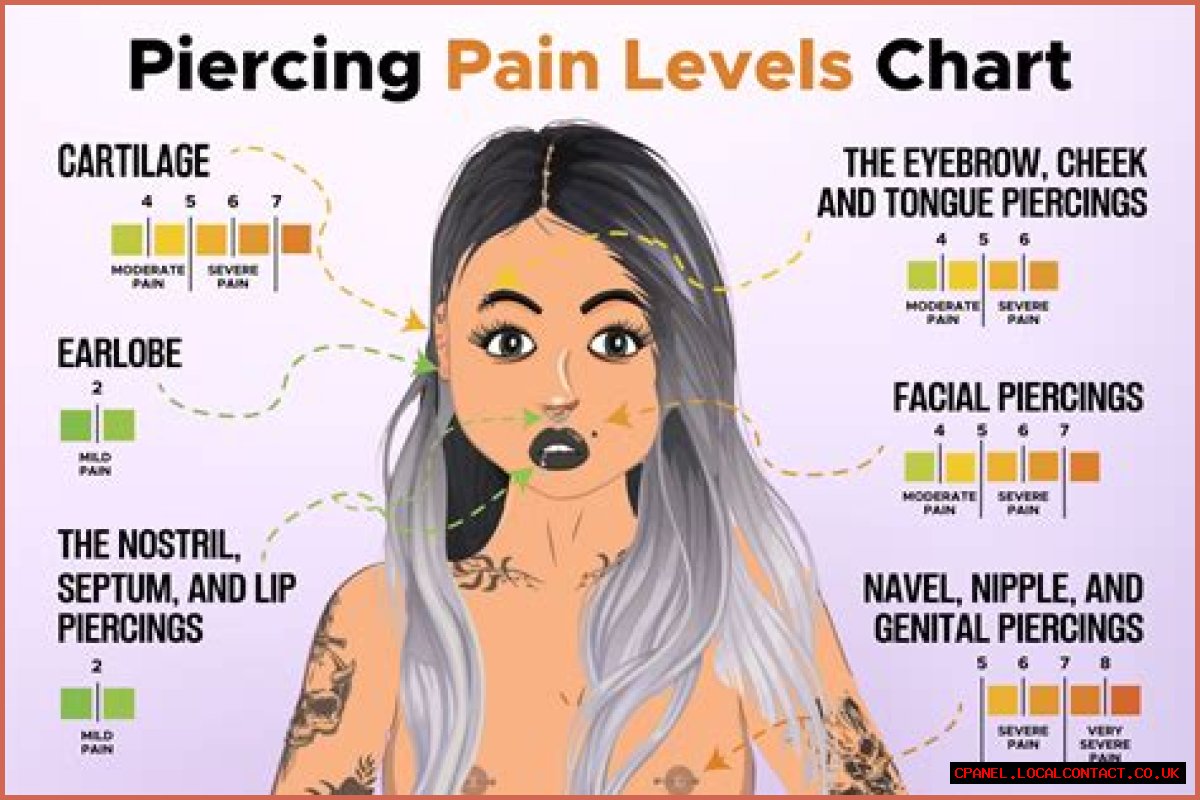Piercing Pain Chart: Understanding Pain Levels For Different Body Piercings
Piercing pain chart is an essential guide for individuals considering body piercings, as it provides insights into the pain levels associated with various body parts. Understanding the pain levels can help potential piercees make informed decisions about their body art. This article aims to delve deep into the concept of piercing pain, offering a comprehensive overview of the pain levels of different piercings, tips for managing pain, and more.
Body piercings have become increasingly popular in recent years, with many individuals choosing to express their personal style and individuality through this form of body art. However, one of the most common concerns among those considering a piercing is the level of pain they might experience during and after the procedure. The piercing pain chart serves as a valuable resource to navigate these concerns.
In this article, we will explore the piercing pain chart in detail, discussing various types of piercings and their associated pain levels, how to prepare for a piercing, tips for pain management, and aftercare instructions. By the end of this article, you will have a better understanding of what to expect during your piercing experience.
- Table of Contents
- What is a Piercing Pain Chart?
- Understanding Pain Levels of Body Piercings
- Different Types of Piercings and Their Pain Levels
- Ear Piercings
- Facial Piercings
- Body Piercings
- Intimate Piercings
- Pain Management Tips for Piercings
- Aftercare Instructions for Piercings
- Common Misconceptions About Piercing Pain
- Conclusion
What is a Piercing Pain Chart?
A piercing pain chart is a visual representation that categorizes the pain levels associated with various types of body piercings. It typically ranges from 1 to 10, with 1 being minimal pain and 10 being extreme pain. The chart helps individuals gauge their pain tolerance and prepare mentally for the piercing experience.
👉 For more insights, check out this resource.
Understanding Pain Levels of Body Piercings
Pain perception varies from person to person and can be influenced by numerous factors, including individual pain tolerance, the skill of the piercer, and the location of the piercing. Understanding these pain levels can help set realistic expectations for those considering a piercing.
Different Types of Piercings and Their Pain Levels
Ear Piercings
Ear piercings are among the most popular types of body piercings. The pain level for ear piercings can vary depending on the specific location:
👉 Discover more in this in-depth guide.
- Lobe Piercing: Pain level 2
- Cartilage Piercing: Pain level 3-5
- Helix Piercing: Pain level 4
Facial Piercings
Facial piercings, including eyebrow, nostril, and septum piercings, also come with varying pain levels:
- Eyebrow Piercing: Pain level 4
- Nostril Piercing: Pain level 3
- Septum Piercing: Pain level 5
Body Piercings
Body piercings such as navel and nipple piercings are known for their distinctive pain levels:
- Navel Piercing: Pain level 4
- Nipple Piercing: Pain level 6-7
Intimate Piercings
Intimate piercings are known for being among the most painful due to their sensitive locations:
- Prince Albert Piercing: Pain level 7-8
- Clitoral Hood Piercing: Pain level 6
Pain Management Tips for Piercings
While some level of discomfort is expected during a piercing, there are several strategies to manage pain effectively:
- Choose a reputable piercer to ensure a smooth procedure.
- Consider using a numbing cream before the piercing.
- Practice deep breathing techniques to stay calm.
- Stay hydrated and eat a light meal before your appointment.
Aftercare Instructions for Piercings
Proper aftercare is essential for minimizing pain and preventing infections:
- Clean the piercing with saline solution or an antiseptic.
- Avoid touching or twisting the jewelry unnecessarily.
- Follow your piercer's aftercare instructions closely.
Common Misconceptions About Piercing Pain
There are several myths surrounding piercing pain that can lead to misconceptions. Some commonly held beliefs include:
- All piercings are equally painful – This is untrue, as pain levels vary by location.
- Piercings should always hurt during healing – While some discomfort is normal, excessive pain may indicate an issue.
Conclusion
In conclusion, the piercing pain chart serves as a valuable tool for individuals considering body piercings. By understanding the pain levels associated with different types of piercings, potential piercees can make informed decisions and manage their expectations. If you’re contemplating a piercing, remember to choose a reputable piercer, follow aftercare instructions, and be aware of your pain tolerance.
We encourage you to leave your comments below regarding your experiences with piercings or any additional tips you may have. Sharing your insights can help others in the community. Don't forget to explore our other articles for more information on body piercings and self-expression!
Thank you for reading, and we look forward to seeing you again soon!
Sally McNulty Age: Understanding The Life And Career Of A Rising StarUnderstanding Liz Bishop's Salary: A Comprehensive OverviewRose Hart: A Deep Dive Into The Life And Career Of A Rising Star
